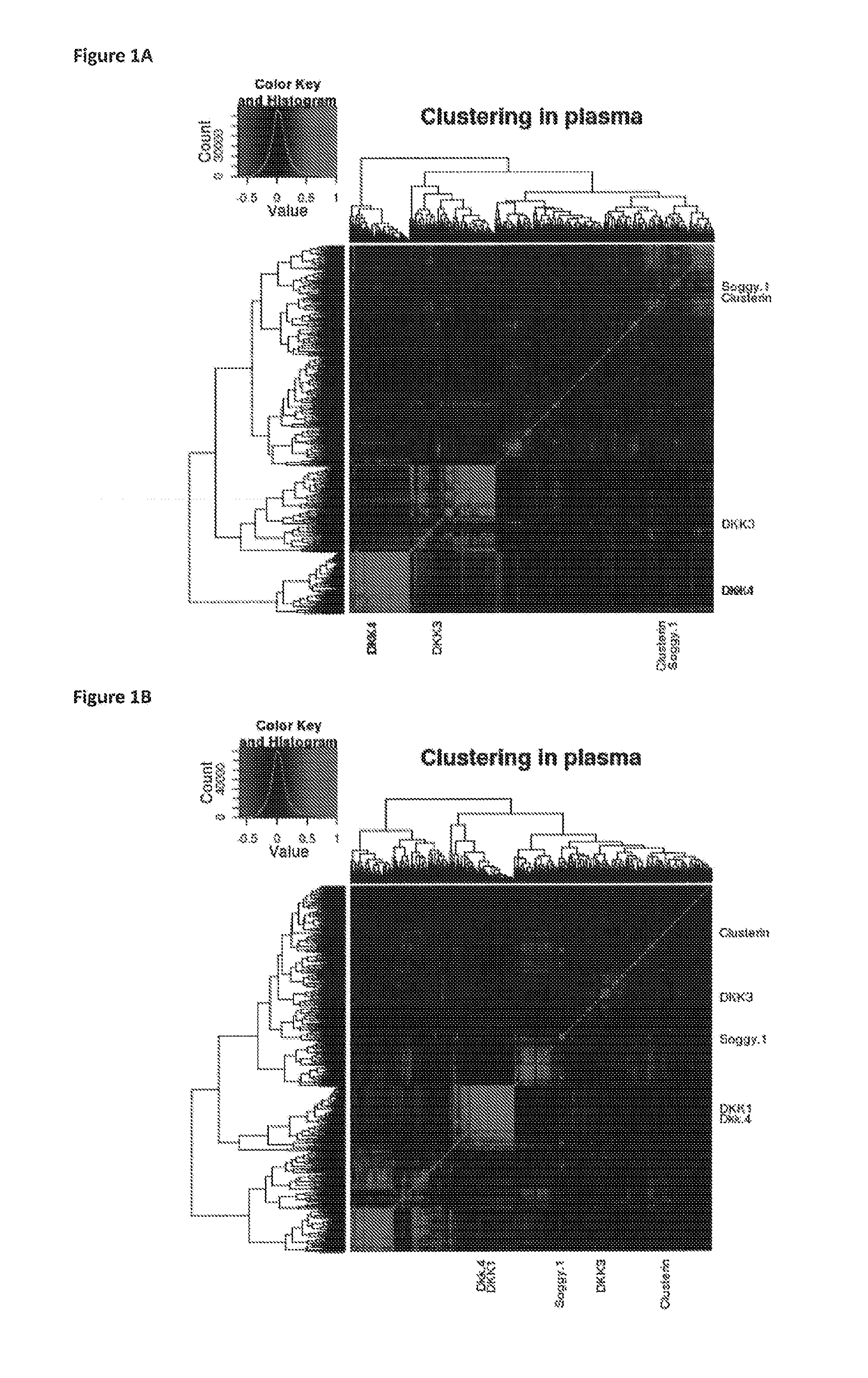Dickkopf (DKK) Proteins as Biomarkers for Cognitive Decline Associated with Alzheimer's Disease
a technology of alzheimer's disease and dickkopf protein, which is applied in the field of biomarkers of cognitive decline, can solve the problems of cognitive decline, inability to communicate, and inability to detect and treat people with ad
- Summary
- Abstract
- Description
- Claims
- Application Information
AI Technical Summary
Benefits of technology
Problems solved by technology
Method used
Image
Examples
examples
[0074]Peripheral Signatures of the Ab-Clusterin-Dkk Neurotoxicity Pathway as Blood Based Biomarkers
[0075]Previously we and others have identified a molecular pathway responsible for the neurotoxic signal of Aβ (see Killick R, et al. Clusterin regulates beta-amyloid toxicity via Dickkopf-1-driven induction of the wnt-PCP-JNK pathway, Mol Psychiatry 2012; Rosi M C, et al. Increased Dickkopf-1 expression in transgenic mouse models of neurodegenerative disease, Journal Of Neurochemistry 2010; 112(6):1539-51; Cappuccio I, et al. Induction of Dickkopf-1, a negative modulator of the Wnt pathway, is required for the development of ischemic neuronal death, J Neurosci. 2005; 25(10):2647-57; and Purro S A, et al. The Secreted Wnt Antagonist Dickkopf-1 Is Required for Amyloid beta-Mediated Synaptic Loss, The Journal of neuroscience: the official journal of the Society for Neuroscience 2012; 32(10):3492-8).
[0076]This pathway includes the Wnt modifier Dkk1 and the AD risk gene clusterin, and is b...
PUM
| Property | Measurement | Unit |
|---|---|---|
| brain imaging | aaaaa | aaaaa |
| concentration | aaaaa | aaaaa |
| time | aaaaa | aaaaa |
Abstract
Description
Claims
Application Information
 Login to View More
Login to View More - R&D
- Intellectual Property
- Life Sciences
- Materials
- Tech Scout
- Unparalleled Data Quality
- Higher Quality Content
- 60% Fewer Hallucinations
Browse by: Latest US Patents, China's latest patents, Technical Efficacy Thesaurus, Application Domain, Technology Topic, Popular Technical Reports.
© 2025 PatSnap. All rights reserved.Legal|Privacy policy|Modern Slavery Act Transparency Statement|Sitemap|About US| Contact US: help@patsnap.com

